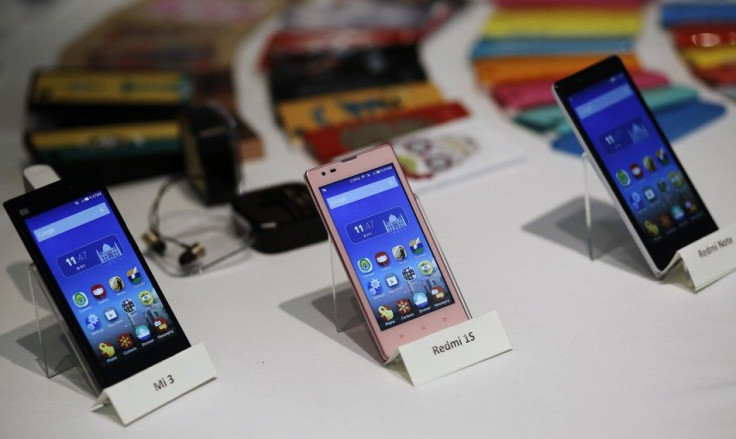Xiaomi Mi4 vs. Moto X (2014) – Specifications, Features, Release Date And Price Showdown

The next-generation Moto X 2014 (aka Gen 2) has recently been launched, whereas the Xiaomi Mi4 was released in August. Readers who are interested in the Moto X (2014) or the Xiaomi Mi4 should check out this comparison.
Display, Exterior And Size
The Moto X 2014 features a 5.2-inch AMOLED display and 1,080 x 1,920 pixels resolution. The Xiaomi Mi4, meanwhile, comes with a relatively smaller 5.0-inch Sharp/JDI OGS full lamination display along with the same resolution as the Moto device. In addition, the pixel densities of Xiaomi and Motorola handsets stand at 441 ppi and 424 ppi, respectively.
When it comes to the exterior, the 2014 Moto X looks similar to the original version of Moto X released in 2013. Though Moto X's body shape is identical to its predecessor, an aluminium frame replaces the previous model's plastic frame, giving the new handset a sleeker finish. Also, the front and back panels of Moto X (Gen 2) can be disintegrated and customized via the Motorola Moto Maker site, similar to other Moto devices. Moreover, the Motorola logo is quite larger and is surrounded by a metallic ring design, according to Android Origin.
The Xiaomi device, on the other hand, resembles the iPhone design with the same stainless steel band surrounding the sides of the handset. Specifically, the white plastic fixers alongside the metallic band are very much Apple-like. Even though it houses a glossy plastic back shell, the metal band offers the much-loved premium look, says CNet. Overall, both devices look stunning from the outside.
In terms of size, the thickness and the weight of the Moto X 2014 are 0.39-inch and 144 g, respectively, whereas the Xiaomi Mi4 is thinner but heavier at 0.35-inch thick and weighs 149 g.
Hardware, Software And Memory
Interestingly, both devices are powered by the same quad-core (Qualcomm Snapdragon 801) Krait 400 processor clocked at 2.5 GHz. While the Moto X is backed by a 2 GB of RAM, the Xiaomi Mi4 impresses with a solid 3 GB of RAM.
In addition, the Xiaomi device runs on Android v4.4.3 KitKat OS with MIUI 6 UI, whereas the Moto handset runs on Android v4.4.4 KitKat OS, which is upgradable to Android L (5.0). Furthermore, Moto X 2014 offers 16 GB and 32 GB of internal storage, while the Xiaomi Mi4 comes with 16 GB and 64 GB of in-built storage capacities. However, both phones do not have a microSD card slot for expansion.
Camera And Battery
Both devices sport the same 13 MP primary camera unit with dual-LED flash. In addition, the Xiaomi Mi4 features a killer 8 MP front-facing shooter for selfies, while the Moto X houses a 2 MP snapper in the front. Moreover, the Xiaomi device is backed by a killer Li-Ion 3080 mAh battery, whereas the 2014 model of Moto X is packed with a relatively inferior Li-Ion 2300 mAh battery unit.
Additional Features
1. According to Android Origin, Moto X 2014's battery unit can be charged in 15 minutes. The battery is expected to last for eight hours.
2. The latest Moto X maintains the same voice-based "OK Google" feature from its predecessor. However, it has improved voice control. The phone can activate any app/service/program in the device. Additionally, users can post any information on Facebook and WhatsApp via voice commands.
3. Moto X's infrared sensor has the ability to silence the alarm with the help of hand-swipe over the screen. Moreover, users can reject calls with the same gesture.
4. While Moto X supports NFC, the Xiaomi Mi4 doesn't. As it turns out, only 1% of users across the globe are using NFC; hence, the company dropped the feature in Xiaomi Mi4, according to GizChina.
5. While the Xiaomi handset supports micro-SIM, the Motorola device supports nano-SIM. Notably, the Xiaomi Mi4 supports WCDMA; however, a new variant is expected to hit the markets later this year with international LTE support. Nevertheless, LTE Xiaomi Mi4 has recently been released in China for $325, but it works only with Chinese networks.
6. The Xiaomi device's rear panel can be altered with wood and marble panels, says CNet.
7. In case of Moto X, the Motorola Moto Maker site allows users to customise the handsets with 25 different options, including leather and wood. It is worth noting that the Moto Maker service has recently been introduced in the UK.
Price And Release Date
The Xiaomi Mi4 smartphone can be purchased for $399 (roughly translates to AU$429) in Oppomart. Also, interested readers can purchase the Xiaomi device from Xiaomi World for $429.99.
The Moto X 2014, meanwhile, is priced at $500 (roughly translates to AU$558). Furthermore, Motorola Hint (wireless earbud) can be purchased for $150 and Motorola Turbo Charger (that charges the phone in 15 minutes) is priced at $35. In case you missed it, the Moto X preorders started on Sept. 16 in the U.S.
Also Read
1. Samsung Galaxy Note 4 vs. BlackBerry Passport - Specifications, Features, Release Date And Price Showdown - [Read]
2. Sony Xperia E3 vs. Moto G (2014) - Specifications, Features And Price Showdown - [Read]
3. Motorola Moto X (2014) vs. Moto X (2013) - Are The Specs, Features And Price Worth The Upgrade? - [Read]






